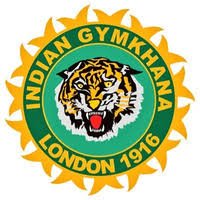About
Once upon a time…
Two cricket teams arrived punctually and changed into their flannels on a sunny English summer day in Mill Hill. Several celebrities had been invited to watch the match, an introduction to the Club team, with hopes of enlisting their support for a fundraising effort.
The captains walked to the pitch for the coin toss. Just as the match was about to begin, the landlord, accompanied by seven strong men, rushed onto the field and declared, "No money, no play." The cricketers were standing on land they were negotiating to buy for the Club and had promised the landlord an advance deposit after the match. M. P. Banjana, a Somerset County cricketer and the team captain, attempted to reason with him, saying, "Let us play, and we will settle the money afterward." But the landlord was unmoved. Tempers flared as the landlord ordered his men to force the cricketers off the pitch. The match was over before it had even begun, and the players, along with their celebrity guests, left feeling humiliated.
The year was 1920.
This incident sparked a strong reaction from the Indian High Commission and the Indian community. Shortly after, Mr. T. B. W. Ramsay, a barrister-at-law at the Privy Council, enlisted the support of Lord Hawke, the President of the M.C.C. Together, they launched an appeal to raise £15,000 to purchase a sports ground for the Club. Heirs to the Maharajas and Nawabs who had been unceremoniously expelled from the Mill Hill pitch quickly rallied to the cause. The Maharaja of Patiala stepped forward with a financial guarantee, and others, including the Maharajas of Kapurthala, Jaipur, Jodhpur, Cooch Behar, and Indore, the Nizam of Hyderabad, and Sir Victor Sassoon, became "founders and patrons." With the backing of such powerful and wealthy figures, the Indian Gymkhana Club secured a permanent home at Osterley, where it still stands today. Lord Hawke became the Club's first President.
Founded in 1916 without a clubhouse, the Club fielded its own cricket team almost immediately. In its inaugural match, played on June 2, 1916, M. P. Banjana scored a century against the visiting Australian team, while C. H. Gunasekra, another county cricketer, achieved a hat trick. Over the years, many prominent cricketers and hockey players from India, Pakistan, and Ceylon graced the Osterley grounds. Among them were the Maharaja of Vizianagram, who later became President of the Indian Board of Cricket Control, as well as players like Vijay Merchant, Nazir Ali, Jahangir Khan, Sir Learie Constantine, Vijay Hazare, Polly Umrigar, Vijay Manjrekar, the Nawab of Pataudi, and more recently, Sunil Gavaskar, Kapil Dev, and Imran Khan. In 1952, Rohan Kanhai visited the Club when his team toured Britain, alongside Sonny Ramadhin and Alf Valentine.
In 1917, Sir James Walker C.I.E. presented the Club with a Challenge Cup for lawn tennis. This was followed by the Maharani of Cooch Behar's donation of the Cricket Shield, named in memory of her husband, ‘The Maharaja Jitendra Narayan of Cooch Behar Memorial Shield.’ In 1961, a silver trophy for cricket was also donated in memory of Shri Narottan Morarjee by the Scindia Steamship Company of Bombay, offering a valuable record of the best batsmen and bowlers each year.
The Indian Gymkhana Club Ltd is open to members of all races and religions. Its membership is not limited to people of Indian origin. During the Club's Golden Jubilee celebration in 1966, the message was clear: the Club aimed to be a multi-racial center where people, both young and old, could come together to play sports and foster goodwill across generations. This vision remains even more true today.



